Last summer our team toured the Okanagan, visiting numerous museums and archives. We would set-up in their spaces and spend 3 days digitizing as much as possible, then turn around and head back home to Kelowna. We had a lot of fun and made some great connections.
This summer, however, we’ve adopted a slightly different model for digitization. We are now mostly borrowing items from our partners for a few weeks to digitize them in-house at UBC Okanagan. We still head out on the road to pick-up and return materials, and we are planning a couple of over-night trips, but for the most part we’re working from our home base.
Why is this, you might wonder? First, we have a new and exciting large-format scanner, which can digitize maps and blueprints, but which we cannot take with us on the road. Lots of our partners have maps they’d like to digitize, so we need to borrow them to do so. Second, we have found that this is a much more efficient way to do digitization, as it saves us the set-up, take-down, and travel time required for overnight trips.
So, Allison hit the road last week for our first pick-up mission this summer, visiting the Armstrong Spallumcheen Museum & Art Gallery, the Enderby and District Museum and Archives, and the Lumby and District Museum.
Armstrong Spallumcheen Museum & Art Gallery
The Armstrong Spallumcheen Museum & Art Gallery currently has one of the largest collections in our Arca repository, including a combination of materials we have digitized and items that they have scanned independently. Their collection includes photographs, city records, land rolls, and items from the Armstrong Cheerio Club.
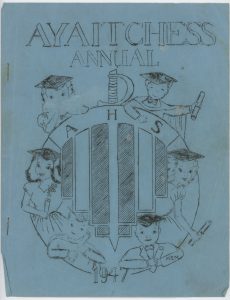
This summer, we have three main groups of items that we are digitizing for Armstrong:
- Over 100 cassettes created by the museum that contain interviews with local residents about the history of the area.
- 33 high school annuals from Armstrong High School, from the 1940s, 50s, and 60s.
- 10 large maps of Armstrong and the surrounding area.
It’s great to get to keep adding to this fantastic collection!
Enderby and District Museum and Archives
Last summer, we had the pleasure of digitizing a large number of photographs from the Enderby and District Museum and Archives. We also scanned images from BC’s Inland Empire, a self-published photograph album with accompanying narrative created by Erskine Burnette documenting his travels throughout central/southern
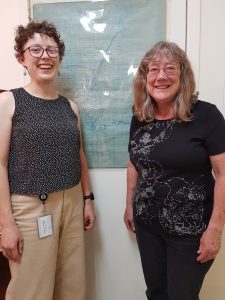
British Columbia. These images have some of the most detailed descriptions in our collection, written by Burnette himself and carefully transcribed by our team for online access.
This year, we are looking forward to digitizing over 50 maps from the Enderby collection, which will be a fantastic addition to our repository. We have heard from Joan Cowan, volunteer archivist, that these maps are in high demand from visitors as well as other repositories, and are excited to facilitate greater access to these materials.
Lumby and District Museum
Currently, our collection of materials from the Lumby and District Museum is focused on photographs. We are excited to be able to continue to add to this collection this summer, as we will be digitizing many photographic negatives from the museum. The negatives we are digitizing are currently inaccessible to users because the museum does not have a light table to view them on. As such, they have not been arranged or described.
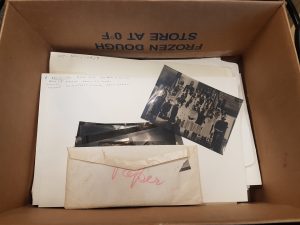
With our help, the Lumby and District Museum will be able to view these images, move them into acid-free envelopes, and provide access to them for the first time. Volunteers from the museum will be adding descriptions to the images once they are digitized, which is a new experiment for us. We are very excited to be able to help make these images available to the public!
Header photo: Lumby and District Museum and Archives volunteers, Linda Vlasveld (standing) and Delores Pearson (sitting), hold up a copy of The Lumby Logger—a possible future digitization project for our team!
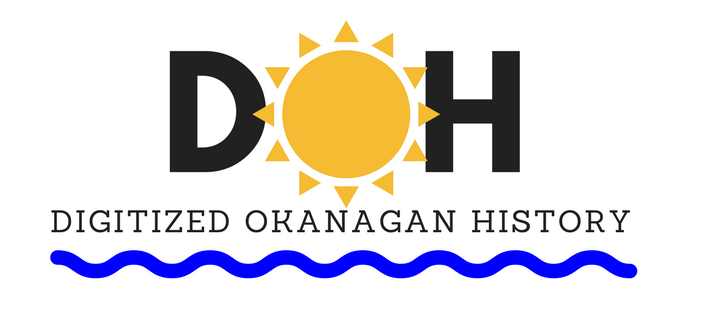
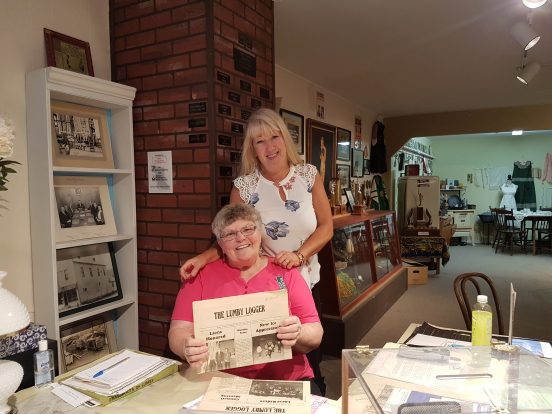

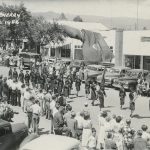
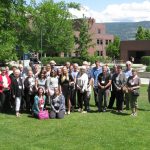
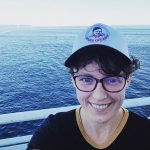
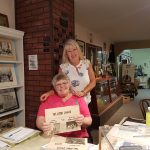
Rene Hackstetter
July 30, 2018 — 6:13 am
Wonderful work on behalf of local Museums who now have a digital ” leg up “, in propagating their messages about the importance of Local History!
As an Okanagan expatriate now living in the Godless East, it is a pleasure to look at this archive and not only reminisce, but to be able to fix images in one’s mind of the areas of one’s youth with certainty, fill in the missing pictures and generally revel in all things Armstrong and the Spallumcheen…it doesn’t get any better except for visiting the old hometown!
allison jones
July 30, 2018 — 7:55 am
Thanks Rene. Glad to hear that you are enjoying the pictures from afar!